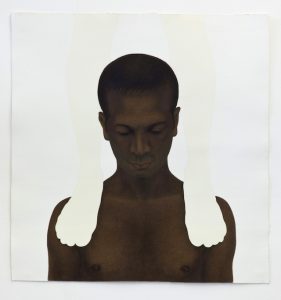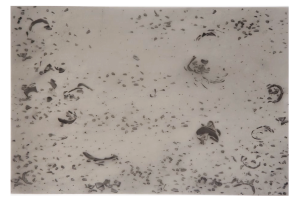The Art House was delighted to present Ruins, an exhibition of work in development by Ali Kazim, created during his SOMETIMES Artist Residency. SOMETIMES residencies offer artists the time, space, and support to create new work and expand their professional practices, and this exhibition highlights the meticulous and evocative outcomes of Kazim’s residency. Ruins offered a meditative exploration of history, memory, and the interplay between preservation and imagination.
Kazim’s new work drew inspiration from the ancient ruins of his hometown, Lahore. Fascinated by their enigmatic history, Kazim produce new intricate pigment drawings to reimagine the fragments uncovered by monsoon rains. Working from photographs of scattered pottery shards, Kazim carefully reconstructs these finds through a poetic process, aiming to evoke the lives of those who left them behind.
To create these pieces, Kazim experimented with unique techniques, including stencilling and layering powdered pigments on tracing paper, as well as incorporating cotton wadding. The resulting works reflect the shifting, dusty textures of the excavation sites, merging physical remnants with an imaginative interpretation of the past.


“This new body of work is a response to the site I visited near Lahore in Pakistan. The site is on the old path of the river Ravi. It’s a massive mound probably an ancient city is buried underneath the layers of sand and dust. The monsoon rains have uncovered the pottery shards over the period of time. The landscape is full with the broken terracotta pieces.
The site has become a burial ground for the local communities. There is a shrine on the top of it, where every year a sacred festival takes place to celebrate the life of the saint. Perhaps now it’s far too difficult to excavate the site and find the hidden stories buried underneath.
I’m trying to retrace the fragments of the ruins to make coherent or incoherent pictures, which are not exactly documentation of the site but a more poetic interpretation. I also like the idea of tracing the traces of the ruins on tracing sheets, placing the pottery shards’ shapes carefully one by one on the smooth translucent surface as performing a sacred ritual. The process somehow allows the mind to move fluidly between the present and the past.”
